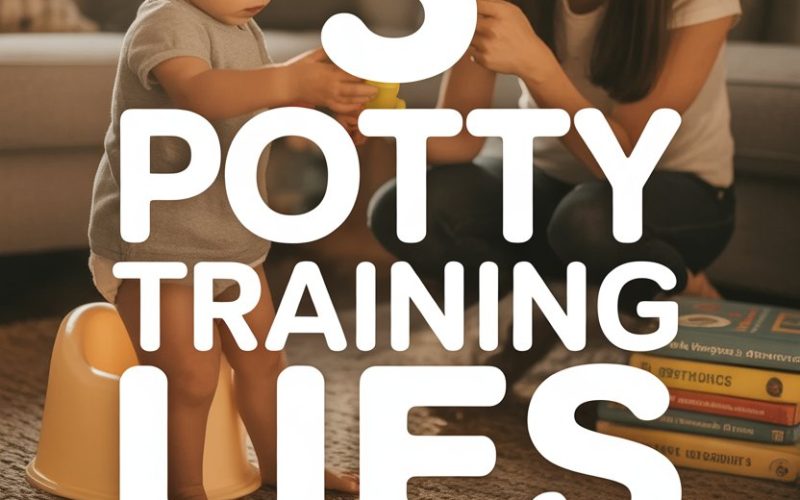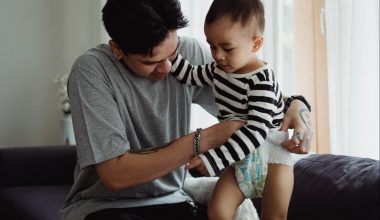Potty training: the phrase alone makes some parents sweat, others laugh, and a brave few stockpile cleaning supplies. If you’re picturing serene toddlers perched on potties, angelic smiles plastered on their faces, you’re in for a surprise.
This milestone comes with a generous helping of myths, unsolicited advice, and at least one story you’ll never share at a dinner party.
Let’s sort fiction from fact and talk about the three whoppers that refuse to flush themselves away.
1. The Perfect Age Exists
“Two years old—potty train then or you’ll regret it!”
Sound familiar? Maybe your mother-in-law swears her children were nappy-free at eighteen months, or the internet’s convinced you every child in Sweden is already using the loo before their second birthday.
The “right” age for potty training is as mythical as a self-cleaning toddler. Pediatricians and child development experts agree that readiness depends far more on the child than any calendar date.
Some little ones wake up one morning determined never to wear a nappy again, while others have strong feelings about sticking with their familiar routine (and who can blame them, given the amount of change little kids navigate daily?).
Physical readiness is one piece of the puzzle—bladder and bowel control, the ability to walk to the potty, pull down trousers, and follow simple instructions. Emotional readiness is equally important.
A child facing a new sibling, a recent move, or any major upheaval may not be thrilled about changing their bathroom routine on top of everything else.
A large-scale study published in Pediatrics found that starting before two or after three didn’t impact eventual potty success or prevent future accidents.
The researchers suggested that instead of racing against the clock, parents should watch for interest and readiness cues, such as hiding to poo, tugging at wet nappies, or expressing interest in big-kid underpants.
Comparing your child to their playgroup pals? That’s the quickest route to frustration and self-doubt.
Celebrate your child’s timeline; it’s the only one that matters.
2 Accidents Mean You’ve Failed
If every wet pair of trousers is making you question your parenting credentials, you’re not alone. There’s a widespread belief that the moment you “start” potty training, you must never look back.
As if toddlers will grasp the concept, file the process under “completed milestones,” and move on with their lives.
Here’s the real scoop: accidents are part of the whole shebang. Even the most enthusiastic trainee will have plenty of misses before things consistently click.
Dr. Steve Hodges, a paediatric urologist, explains that up to 80% of kids will have occasional accidents for months after leaving nappies behind.
Sometimes, it’s not about the toilet at all.
A child absorbed in a gripping game isn’t likely to pause for a wee. Or maybe they’re testing boundaries (toddlers, surprisingly, turn out to be very interested in power struggles once you introduce potties into the mix).
Each accident offers a learning opportunity. Instead of punishment or disappointment, respond with a matter-of-fact, “Oops, let’s try again next time.”
A recent study found that gentle, non-punitive approaches led to more consistent long-term success than shaming or strictness.
Avoid the temptation to go back to full-time nappies as soon as things get messy, unless your child is clearly telling you they’re not ready. Regression is normal after illness, travel, or big life changes.
The goal isn’t a perfect streak, but steady progress (and no, the carpet won’t stay stained forever).
3 One Method Works for Every Child
Online parenting forums are full of rapturous reviews for the “Three-Day Method,” sticker charts, naked training, and high praise for potties shaped like tiny thrones.
It’s easy to believe there’s a single magic formula—just add water and your toddler will never see a nappy again.
The truth is, what works for one child may leave another utterly unimpressed.
Some children love a bit of pageantry—songs, dances, and shiny reward charts—while others would rather you quietly hand them the toilet paper and call it a day.
There’s no shame in mixing and matching. One parent might have dazzling results with the “wait until they ask” approach, while another bribes their child with chocolate buttons and swears it’s the only reason they survived.
The American Academy of Pediatrics recommends a child-led, positive process, but leaves plenty of room for families to adapt to what works for them.
Sometimes, the best approach is simply to try something that fits your family’s personality—and be willing to pivot when it doesn’t pan out.
If sticker charts turn into power struggles, or skipping nappies causes tears, adjust accordingly. There’s no prize for most creative potty training method, but there’s plenty of relief once your child figures it out.
And if you meet a parent whose child “trained in one weekend with no accidents,” just nod politely. Everyone’s got that friend. (They’re probably blocking out the details.)
Flush the Myths, Keep the Sanity
The stories we tell about potty training are often built on wishful thinking, selective memory, or the odd tall tale. There’s no shortcut, no perfect age, no method that works every time.
What helps? Patience, plenty of patience, good humour, and a solid stash of cleaning supplies.
And if your toddler demands to pee standing on the sofa while wearing a pirate hat, sometimes you just let them.
Parenting, after all, runs on flexibility—and a bit of laughter when things don’t go as planned.





